
Stretching may not seem like the star of building muscle, but it really is.
Here’s the best stretching guide, how to do it right to see all the great gains as a result!
The only time we think of stretching as sexy is in a hot yoga class, but the muscle you can build from stretching will change that notion.
Stretching is always haphazardly tacked onto the front or back end of good workout routines, probably because that’s what your middle school gym class did.
We’ve graduated from the basic calisthenics and it’s time to take stretching seriously because this is how to gain mass.
A full body stretch routine will do wonders for your physique. It’s true the primary goal of stretching is generally to increase flexibility (especially back flexibility to avoid many injuries). But, the techniques we use in a full body stretch routine will lead to greater hypertrophy through a few different pathways.
Using a new combo of static, active and fascial stretches will extend your muscle building powers.
Stretching isn’t just about touching your toes. These new school stretching techniques are about to blow up your muscle bellies. Here’s why and how you need to start stretching.
This Is Static Stretching
Static stretching is what we’re most familiar with. It involves holding a deep stretch and the goal is to lengthen the muscle.
A few things have to happen for a muscle length to actually be elongated and lead to growth.
Static stretches are both physical and neurological. If a muscle is all of a sudden lengthened to a maximal degree, the nervous system will kick in and prevent the muscle from lengthening to prevent injury. It makes sense.
If we’re sprinting and pushing off, we wouldn’t want the hamstring to lengthen as much as possible since that would tear or pull the muscle even more.
After some time, and assurance that it’s safe, the nervous system will begin to let go of the muscle a bit. If you’ve ever stretched and all of a sudden felt the ability to earn a couple more inches than normal that was the nervous system relaxing the muscle. It takes a varying amount of time for this to occur.
Most of the time it’ll take around one minute.
From a muscular perspective, it takes some time for the muscle to actually elongate. When we first go into a stretch the muscle is stretching and squeezing out water and nutrients to make room. This helps if you want to know how to lose water weight.
This process takes about 30 seconds to occur.
This Is How Long You Should Hold Stretches
Stretching for less than 30 seconds means we’re simply moving around nutrients in the muscle and not actually stretching it.
Combined with the nervous system letting go, it takes holding a stretch for at least one minute to actually see improvements in muscle length. For optimal results, stretches like other exercises should be repeated for two to three sets, especially for very tight immobile muscles.
Since the longer a muscle fiber has to go to contract the more force production it can lose and the more energy it will take to contract. This is why static stretching is not recommended before a workout regimen.
Although power may drop, if you don’t have the mobility to do a movement, the benefits of increasing range of motion and avoiding injury could outweigh the loss of power.
Properly doing an exercise is only a small part of how stretching will boost your gains.
Stretching For Muscle
Stretching goes beyond looking impressively muscular and mobile. A normal full body stretch routine will actually help build more muscle.
There’s even one type of static stretching specifically designed to build muscle.
When stretches are done effectively and muscles are lengthened they make us much more effective at doing exercises. A more flexible joint is a big plus. And, that includes the perk of greater back flexibility. The big muscle building movements like the squat and deadlift require huge amounts of mobility.
Being able to do these movements properly in itself will build muscle. Extending the range of motion by doing deep squats or deficit deadlifts boosts this even more.
Training a muscle through a larger range of motion stimulates much more muscle growth.
The person that loads up the bar and squats three inches isn’t building nearly as much muscle as the one that puts less weight on but goes ass to grass.
Taking these exercises through a greater range not only trains the whole muscle, but also increases force production resulting in greater hypertrophy.
Release Your Muscle Potential
If you truly want to learn how to gain muscle mass, then you will begin by doing deep stretches.
Why?
It actually builds muscle. When muscles are deeply stretched there is an increase satellite cell proliferation (cells which turn into muscle) and muscle growth factors get released. Not too shabby of a way to build muscle without even lifting weight.
To get all the benefits of static stretching, perform three sets of 60-second plus stretches on each major muscle group.
Using stretches that lengthen more than one muscle at a time each training session is great way to keep mobile at all times.
Include These Stretches To Increase Range Of Motion And Gains
#1 Lizard Pose with T-Spine Reach
Start in a single leg kneeling position with both knees at 90 degrees. Move the front leg forward slightly and laterally away from the body.
Place the same arm as the front leg flat on the ground under the shoulder. Take the opposite arm and reach it to the sky stacking both shoulders. This is one of the great shoulder workouts.
Hold and repeat on the opposite side.
#2 Pigeon Pose with Reach-Through
Start in a push-up position. Lift and pull the right leg underneath the body.
Externally rotate the right leg so that the outside of the calf can lay flat on the ground. Lower the body to the ground.
Thread the left arm under the body reaching past the right knee. Allow the upper body to sink down to the ground.
Hold and repeat on the other side.
#3 Wide Stance Forward Fold
Start pointing both feet straightforward with a wider than shoulder width stance.
Keeping the spine neutral, dip the upper body towards the ground reaching with the arms.
Once as far down as possible, allow the back to round and sink further into the stretch.
#4 Crescent Lunge with Overhead Reach
Starting in a split squat position, square the hips forward allowing the back heel to lift off the ground. Sink the back knee towards the ground while lifting both arms overhead. Yes, we know this is hard when you have big arms, but try to go as far as you can.
Locking the hands together, reach back and look past the hands into a slight backbend.
Hold and repeat on the other side.
#5 Standing Side Bend
Start with the feet pointed forward shoulder width apart. Interlock the hands above the head.
Keeping the hips still, bend the arms and torso towards one side stretching the lats.
Hold and repeat on the other side.
Weighted Static Stretching Is A Good Option
Another less heard of type of deep stretching has also been shown to build muscle.
Which one?
Weighted stretching involves using weight to deepen the stretch between sets. Studies have found that this type of stretching has resulted in double the muscle growth! It’s not for the faint of heart, but neither is building sick amounts of muscle.
Here’s how it’s been done. A study was done on two groups, one using weighted stretches between sets and the other doing three normal sets of calve raises.
The normal group did the sets with the same weight and reps, but rested their calves between sets. The weighted group did calve stretches between sets by using the weight of the machine to stretch the calves to their fully lengthened position.
The Training Looked Like This:
Calve Raise
1×12 @ 90% 1RM
Superset: 30 second weighted stretch
3×12 @ 75% 1RM
Superset: 3×30 second weighted stretch
This type of training can be expanded to all muscle groups across the body.
Here’s another warning:
This training will test your thresholds to the max. Here are some more samples of combos to start using right away.
Follow the same scheme as the calf example using the weighted stretches in place of rest.
Chest
Exercise: Cable flye
Stretch: Standing tall, allow the handles to pull your arms back into a stretch.
Back
Exercise: Lat pulldown
Stretch: Add weight using a belt and hang from a pull-up bar.
Quads
Exercise: Front squat
Stretch: Sit with your shins on the ground. With the calves under the thighs, place a weighted barbell on your legs.
Hamstrings
Exercise: Romanian deadlift
Stretch: Perform a sit and reach while a partner pushes your back further down.
This Is Active Stretching
We’ve all heard how stretching before exercise is important to prevent injury and how these stretches should be active.
As we discussed, static stretches do have their place in a warm-up. However, it’s true that our focus should remain on active stretches for warm-ups.
Active stretches hit a lot of the necessities a pre-workout ritual needs aside from watching an awesome Rocky Balboa training montage. These movements raise the heart rate, increase synovial joint fluid and build heat in the muscles.
These are all crucial elements to avoiding an injury.
These movements stimulate the nervous system. As the nervous system is responsible for conscious contractions it’s important that it is primed and ready. Contracting muscles as they’re moved can increase this effect.
For example, as a squat warm-up rather than just swinging a leg back and forth, actively contract the glutes at the end range of motion.
This sparks a neurological connection so the glutes can fire up and blast your squat out of the water.
The same can be done for any warm-up move. For example, contract the rear deltoids during arm circles for rows. Check out more deltoid exercises.
This Is Fascial Stretch Training…
High volume pump training helps expand fascia, but using Fascial Stretch Training (FST) is a much more guided attack.
FST is done by finishing a session with seven sets of 8 to 12 reps taking only 30 to 45 seconds rest between each set.
It’s definitely brutal, but also leads to an awesome fascia-stretching pump.
This stretching technique can be used on any muscle and works especially well with isolation moves so that the targeted muscles get as much blood flow as possible.
Given the huge volume of this set it won’t take much weight to hit failure.
Make sure to adjust the weight as the sets go on to stay in the target rep range and maximize the pump.
Stretch The Fascia To Unlock Muscle Gains
The least heard of, but potentially most effective type of stretching involves fascia. Some of the most famous bodybuilders like Jay Cutler have been stretching their fascia for years with huge results.
Fascia is a vast connective tissue that runs throughout the whole body covering every muscle. It can be thought of as a thin stretchy piece of plastic wrap.
Stretching fascia has to be done from the inside out. Expanding fascia is like stretching the case on muscles similar to a balloon.
We can blow up the balloon as much as possible, but at some point we’ll need to stretch that balloon to make more room for air.
Or, in this case, stretch the fascia to make more room for muscle.
That means rather than holding a stretch, a huge pump has to be built so the muscle can press on the fascia from the inside and stretch it.
Here Is An Example Of A Chest Workout Using FST
Bench Press: 3×8
Incline Dumbbell Bench Press: 3×10
Hammer Strength Chest Press: 3×12
Dumbbell Pullover: 3×12
FST Pec Deck Flye: 7×8-12 resting 30-45 seconds between sets
Great Exercises To Try FST On:
Machine Curl
Rope Pressdown
Reverse Flye
Close Grip Cable Pulldown
Leg Extension
Leg Curl
Calve Press
Conclusion
To sum it up all types of stretching (including a full body stretch routine) have their benefits and their place within a workout. If you’re still wondering how to gain mass, stretching will be a part of the answer.
Whether it’s shoulder stretches or just something done mainly to improve back flexibility, stretching can help.
The classic active and static stretches are excellent ways to ensure your training sessions are maximized and to even build a bit of muscle. Incorporating either weighted stretching or FST into your workouts will stretch and build muscle high school gym coaches couldn’t even dream of teaching you how to build.
– By Raphael Konforti MS, CPT
Latest posts by Raphael Konforti (see all)
- The Best 4 Day Workout Split For Greater Gains - Feb 6, 2017
- The Best Lower Chest Workout For A Better Body - Aug 15, 2016
- How To Get Rid Of Shin Splints - Jul 7, 2016

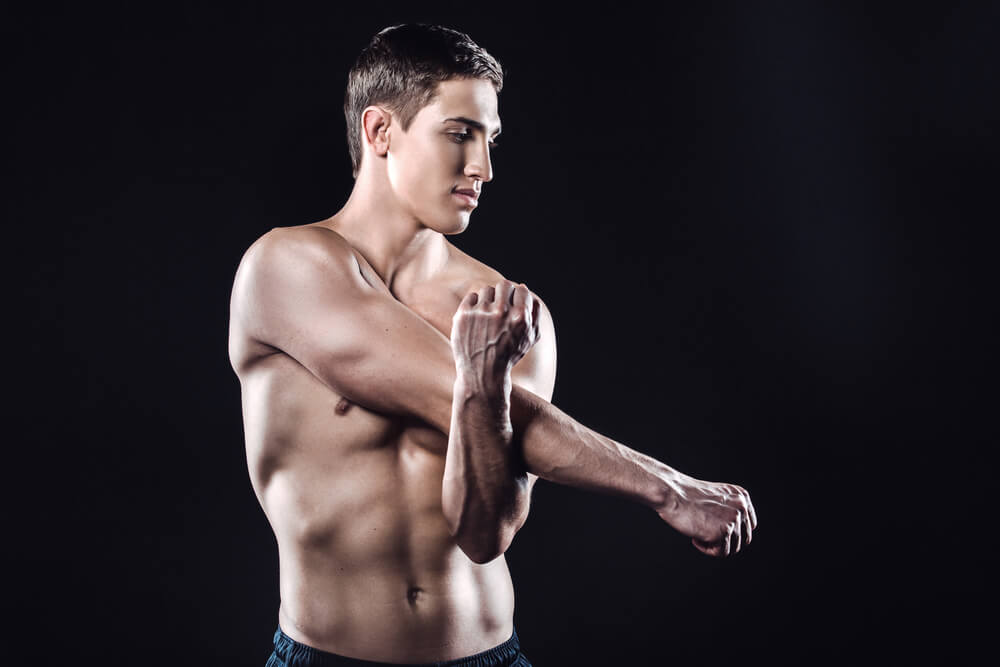

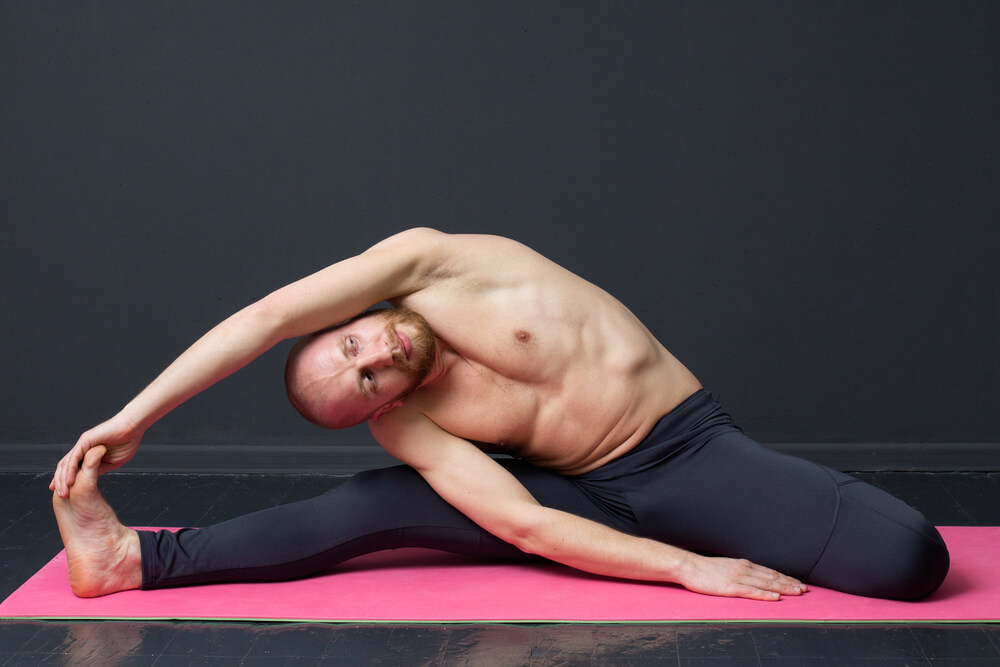
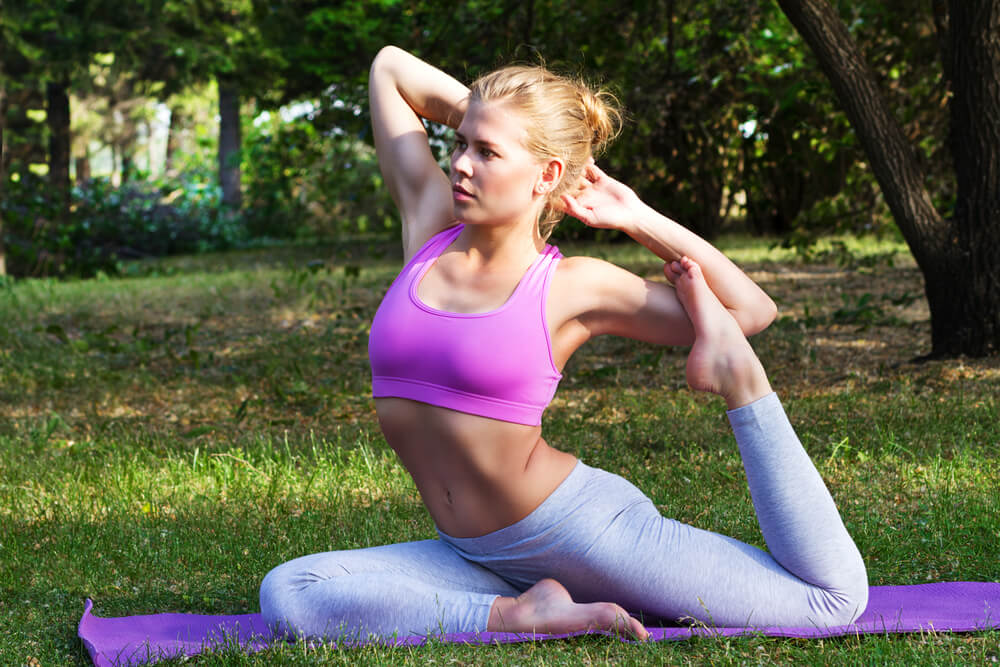


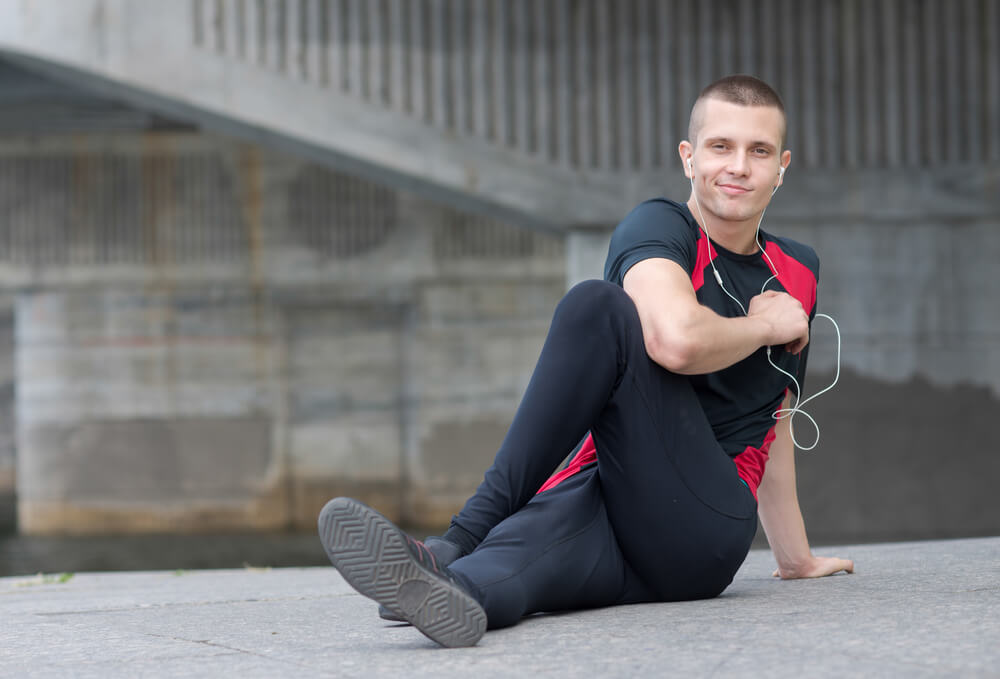
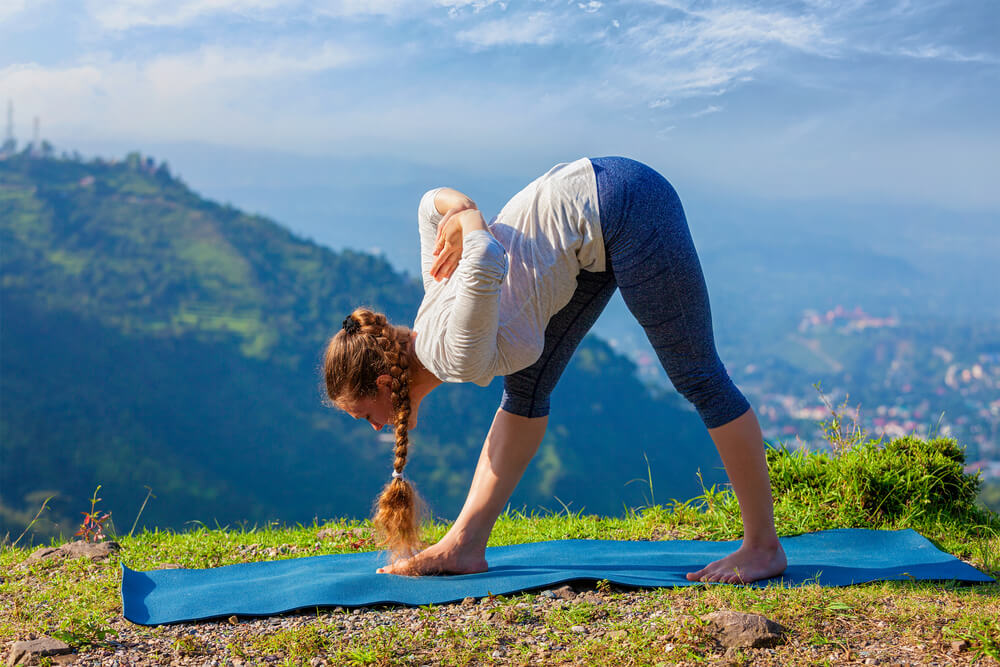









Wow, a very complete and comprehensive view of “Everything You Ever Need To Know About Stretching”
Really good stuff!
Thanks for stopping by John!
Terry Asher
[…] natural stretch and openness you experience after performing these moves are great at cutting down on mental […]
Amazing Article Man, Kepp up the awesome work coming:)